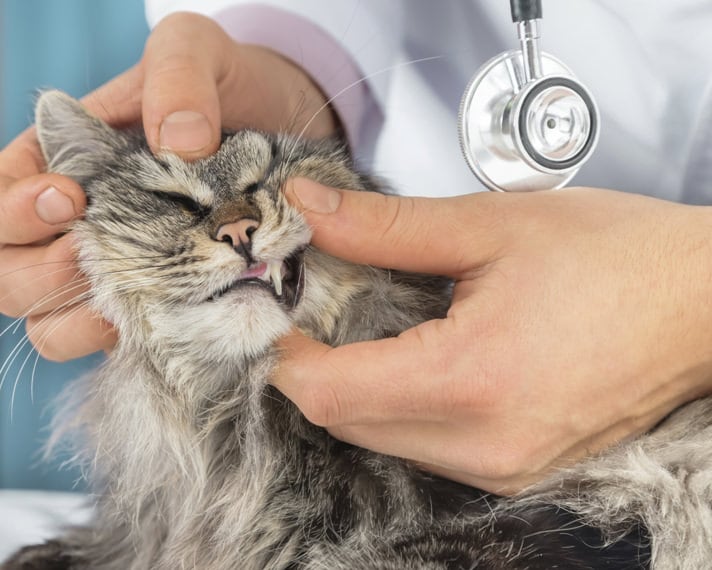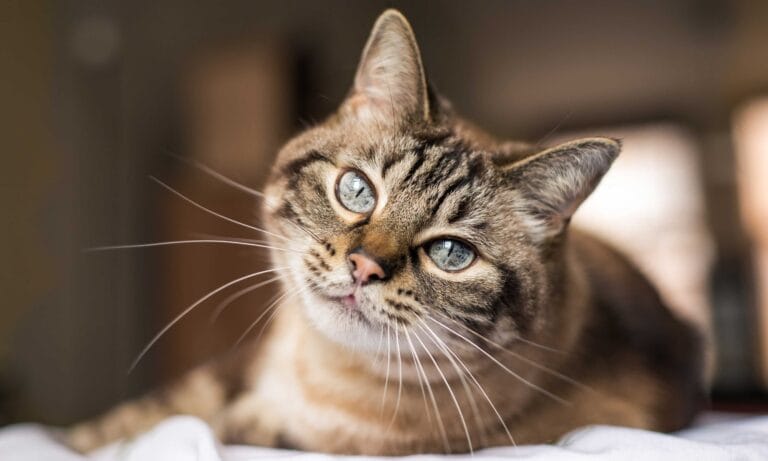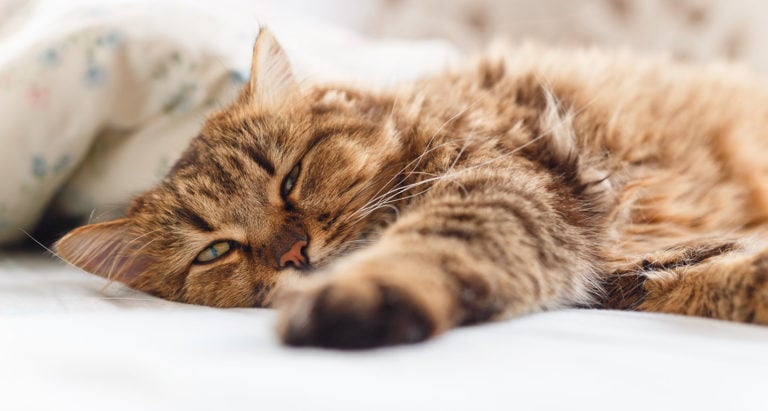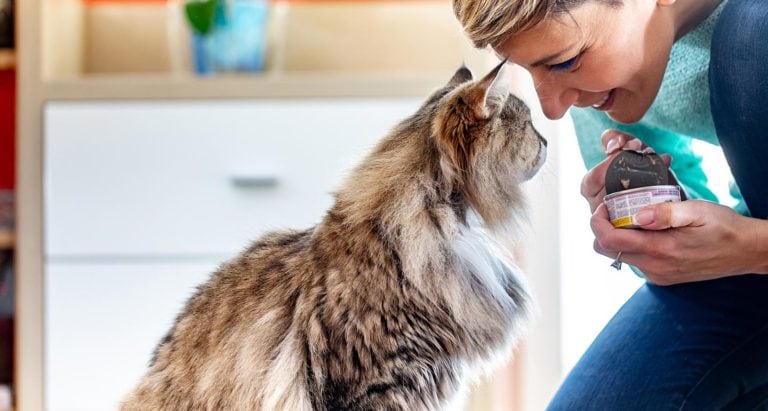Senior care, almost by definition, means being able to juggle many different factors and evaluating your patient as a whole. Nowhere is this truer than with the senior cat, who often blesses us with the combination of multiple manageable conditions, such as chronic kidney disease, hyperthyroidism and dental disease, among others.
Just as the “eyes are the window to the soul,” the mouth is the door to the bloodstream. Given the close association of the gum tissue and a steady stream of bacteria in the mouth (tartar is primarily made up of bacteria in a debris matrix), access to the bloodstream by these bacteria is all too easy.
This becomes an even more important factor in senior kitties, who often have one or more other conditions, and the last thing they need is a continual shower of bacteria from the mouth to further distract the immune system from the job at hand: to protect the cat’s health.
Most dental conditions in cats tend to be progressive, meaning that once they start, they tend to continue to slowly worsen over time. Unfortunately for the golden oldie, this means conditions that started affecting the teeth earlier in life are multiplying — one tooth at the age of 3, three teeth by the age of 6, five teeth by the age of 10, and now at the glorious age of 15, eight teeth. The net result of this means that the patient most in need of interventional treatment (in other words, a dental procedure to treat a problem as opposed to a preventative cleaning) is our older patient. Unfortunately for the cats, many owners are also most reluctant to sedate the older kitty to perform these necessary dental procedures.
This was particularly true in a lovely little senior cat who, at the age of 17, was afflicted by chronic kidney disease, arthritis, hyperthyroidism and advanced dental disease. “Tammy” was always active and busy, but now she just seemed to have “slowed down.” Her owner felt she was just showing signs of age and was inclined to just ignore the change in behavior. However, Tammy was also losing some weight, and her bloodwork showed that all of her chronic conditions — kidney disease and hyperthyroidism — were well controlled. Additionally, she was taking medication for her arthritis and was able to make jumps up onto the furniture. So, when she came in for a senior exam with bloodwork, I was concerned that there was something more going on.
When I examined her, I noticed Tammy had significant dental tartar and gingivitis, and this was causing some inflammation along her gums. Alone, this is an uncomfortable condition, and if it encroaches under the gumline, it can be downright painful. On top of this, she also had some “feline cavities” (also known as feline odontoclastic resorptive lesions), which are certainly quite painful. I advised Tammy’s owner that chronic mouth pain may be a large part of the reason her cat was slowing down. Most cats are pretty tough about discomfort — they rarely share if they are feeling pain, but nonetheless, it does take a toll — and requires us to play detective work at times.
Tammy’s owner was very reluctant to put her under anesthesia for a dental cleaning. After all, she was an elderly cat with a wide number of expensive medical problems. However, after discussing how painful Tammy’s mouth likely was, we did decide that it was in her best interest to get the teeth cleaned up and extract the diseased teeth.
So Tammy came in first thing the next morning on an empty tummy. We gave her another nose-to-tail physical examination and did not find any new problems, and the blood and urine, which we had drawn the day prior, all showed expected results given her medical conditions. We placed an IV catheter into a front leg to allow us to administer fluids to help flush the anesthetic drugs through her body, keep her well hydrated, administer emergency medications if needed and help maintain her blood pressure. Then we sedated Tammy with several very low doses of medication, which is called a “balanced anesthetic plan.”
Once Tammy was napping, we placed an endotracheal tube into her windpipe to allow us to assist her breathing if needed and administer oxygen and a breathable anesthetic medication. This helps us to titrate exactly the right dose of anesthesia for her and adjust quickly as situations change. It also helps to protect her airway from any fluids that may be produced during the dental procedure.
Now that Tammy was fully anesthetized, we moved her into our dental suite and hooked her up to a variety of monitors, which would show her vitals during the procedure. At this point, all of the tartar is cleaned from her teeth, allowing us to see the crown and do a thorough examination. Dental X-rays are taken to evaluate the roots of the teeth. Once we have gathered all of the important data we need to make an informed decision, teeth that are too diseased to leave in place are extracted. The remaining healthy teeth are thoroughly polished, sealed with a dental sealant, and Tammy is moved into the recovery area.
A few weeks after the dental cleaning, Tammy’s owner came back in to tell us that she was amazed at how much more active and alert Tammy was — that having her teeth cleaned took five years off her life, and that she was thrilled at how well she was doing. She might have even started playing with her cat toys. Stories like that help to cement how well cats hide pain.
With thorough planning, careful attention to detail and appropriate anesthetic plans and monitoring, even very senior pets can safely be anesthetized for dental work. I have performed routine dental procedures on cats as old as 26 without complications! Just because kitties are older does not mean they should suffer painful chronic conditions.
By: Dr. Sandra Mitchell
Featured Image: Via Remains/iStock/Thinkstock
Share:









